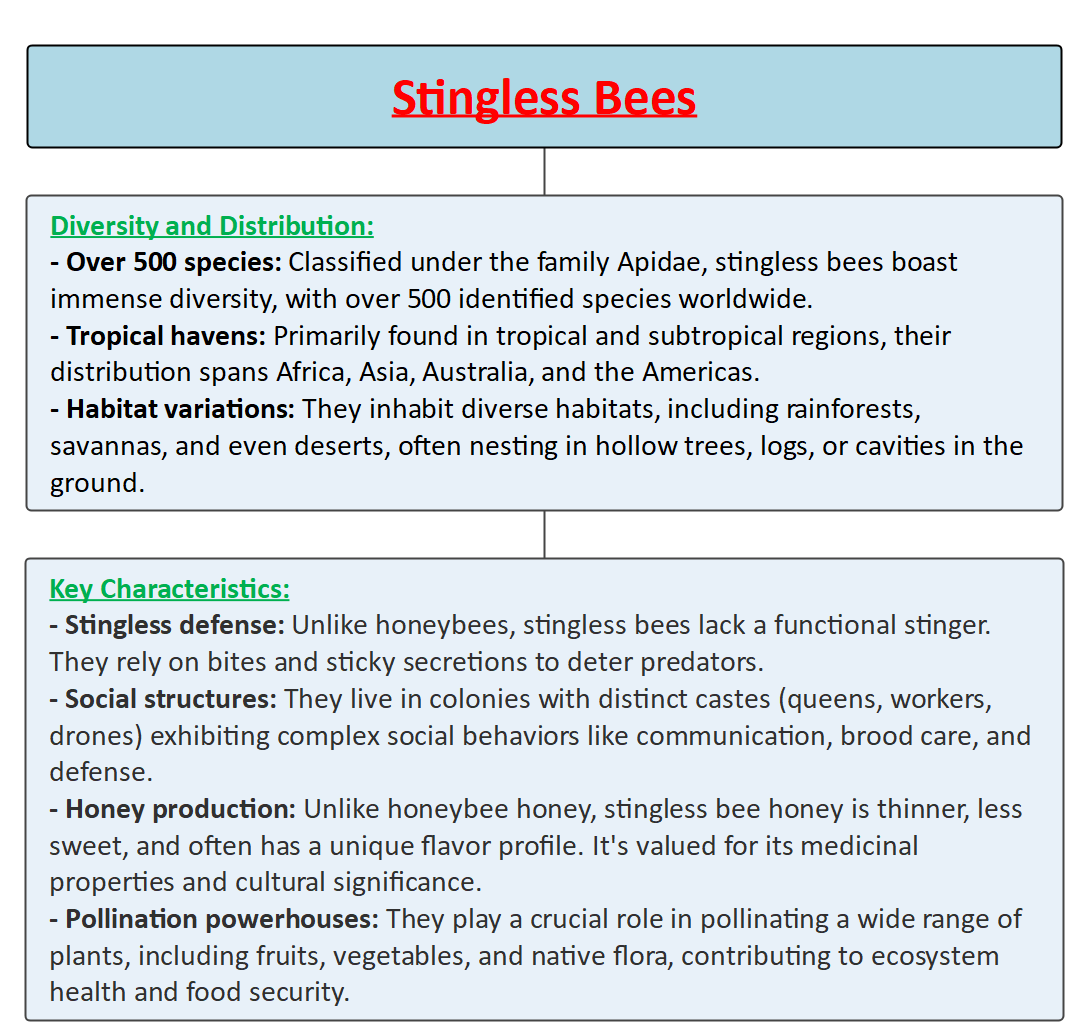Free Courses Sale ends Soon, Get It Now


Free Courses Sale ends Soon, Get It Now



Copyright infringement not intended
Picture Courtesy: https://www.boredpanda.com/stingless-sugarbag-bees-spiral-hives-australia/
Context: In Peru, deforestation poses a threat to the diverse species of stingless bees in the Amazon, putting native pollinators at risk of extinction.
Key Highlights
Threats and Conservation
Conservation Efforts

|
PRACTICE QUESTION Q. Technological advancements like green energy and carbon capture technologies offer potential solutions to environmental challenges. However, they also raise ethical concerns and potential unintended consequences. How to harness technology responsibly and ethically for environmental solutions without exacerbating existing inequalities or creating new problems? |
© 2024 iasgyan. All right reserved